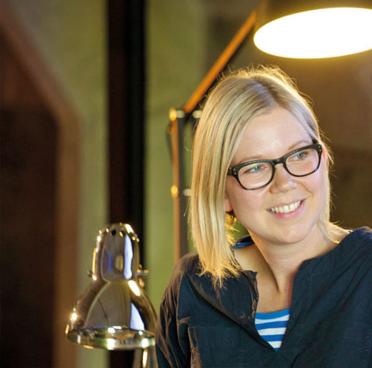The Invisible Store of Happiness: Making
They say it takes a village, and despite Sebastian Cox and Laura Ellen Bacon being the lead designers on the Invisible Store of Happiness project, they’re by no means the only people making it happen.
“Everybody ready?” Cox asks. “Ready” replies Jo Weaden. “Ready,” says George Mead. “Ready,” yell Becky McGowan, Kate Finlay and Jack Huberry in unison. “Laura?” he prompts. “Ready,” she replies.
Cox pops open a small door and pulls a 2.4m length of steaming hot cherry wood onto his shoulder, moving quickly towards his team. Together they position it into the jig. “One, two, three,” says Cox and they bend the now pliable wood around a specially made form. Within a matter of seconds G-clamps are holding it in place as it starts to cool.
These lengths of steam-bent cherry wood, linked together with 11 different scarf joints, will form the horizontal structure of the installation AHEC have commissioned Cox and Bacon to make for the archway at the Order of Saint John during Clerkenwell Design Week. They will be fixed to uprights using simple mortise and tenon joints.
Keen to work with whatever the forest provided, the designers didn’t know what they would be getting until the wood arrived. “It was hugely exciting,” said Cox. “None of it is FAS [first and second] grade wood, but there’s nothing wrong with it. It’s just aesthetic – it’s about standardising materials, but why would you want wood to look uniform? It’s a plant. To see these flecks, cells and knots is massively exciting. I never expected it to look like this.” Four end panels will showcase the hardwood in all its flawed beauty – knots, cracks and sap wood in the cherry and the rippled growth-lines of the ‘curly’ maple.
The timber is cut into straight lengths on a table saw, then planed and ‘thicknessed,’ resulting in consistent lengths with sides at 90 degrees to each other. It takes two weeks just to produce the raw material the team are working with. And every time a machine is switched on, so is a stopwatch. Data sheets list the amount of CO2 used by each machine per hour, enabling the team to calculate the total carbon cost of the project. “I can’t wait to meet the AHEC lifecycle analysis team to review the data,” says Cox, visibly excited. The timber for the interior ‘swathes’ is cut using a spindle-moulder and a stack of spinning circular blades. Slots are cut parallel to the length of the timber, resulting in pliable wooden ribbons attached to the uncut end.
The ribbons are soaked in water to mimic the green wood traditionally used for steam bending, and steamed to make them flexible enough to shape by hand. “They’re really nice, and coincidentally feel quite similar to the willow I often work with,” says Bacon. The wood will be attached to the frame with a mortise and tenon joint at one end and anchored into slots in the structure at the other. “I want to twist and flex each one as much as I can without breaking it,” she says. “Some won’t bend very far at all and some will bend much further – creating a real sense of volume and movement.”
The installation will be built in the workshop, before being divided into three pieces for transport to Clerkenwell and on to 100% Design in Olympia (23-26 September 2015), where it will be reassembled.
“Seb, can we try a really long one?” Weaden asks eagerly, returning to the steam bending. “Yes, why not,” comes the reply and they’re off again. It really does take a village.
